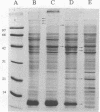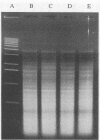Abstract
From Xenorhabdus luminescens XE-87.3 four variants were isolated. One, which produced a red pigment and antibiotics, was luminescent, and could take up dye from culture media, was considered the primary form (XE-red). A pink-pigmented variant (XE-pink) differed from the primary form only in pigmentation and uptake of dye. Of the two other variants, one produced a yellow pigment and fewer antibiotics (XE-yellow), while the other did not produce a pigment or antibiotics (XE-white). Both were less luminescent, did not take up dye, and had small cell and colony sizes. These two variants were very unstable and shifted to the primary form after 3 to 5 days. It was not possible to separate the primary form and the white variant completely; subcultures of one colony always contained a few colonies of the other variant. The white variant was also found in several other X. luminescens strains. DNA fingerprints showed that all four variants are genetically identical and are therefore derivatives of the same parent. Protein patterns revealed a few differences among the four variants. None of the variants could be considered the secondary form. The pathogenicity of the variants decreased in the following order: XE-red, XE-pink, XE-yellow, and XE-white. The mechanism and function of this variability are discussed.
Full text
PDF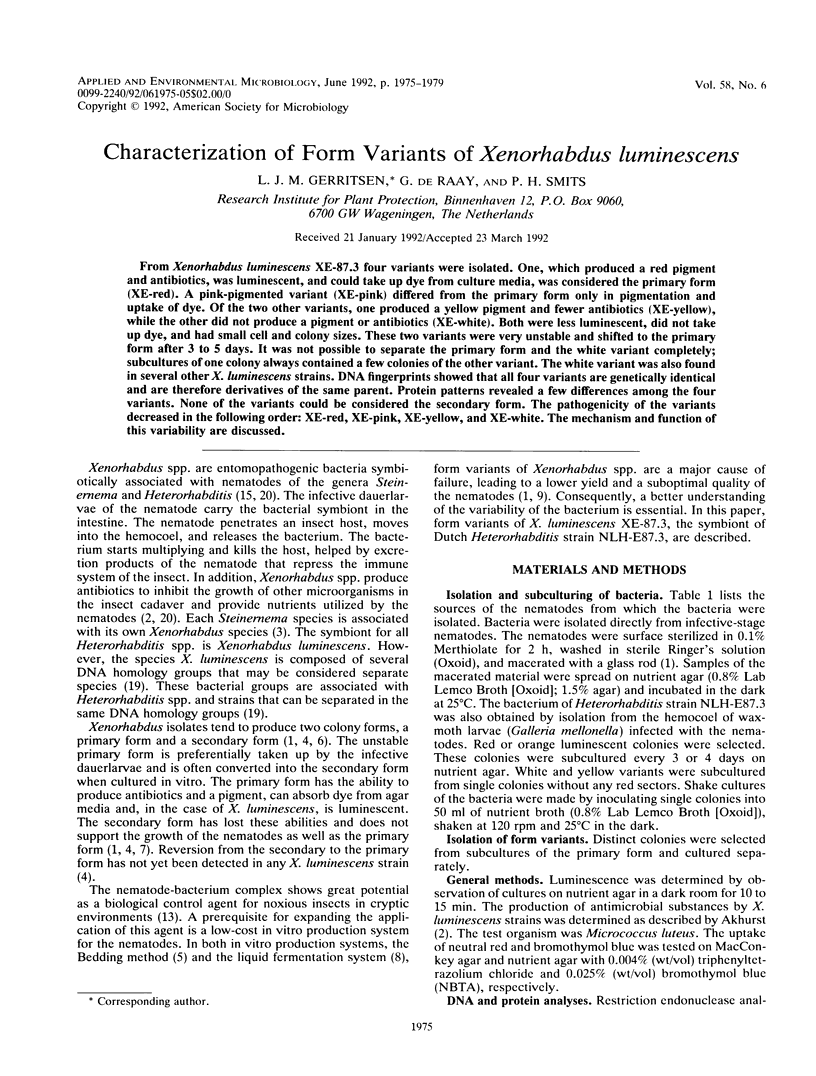
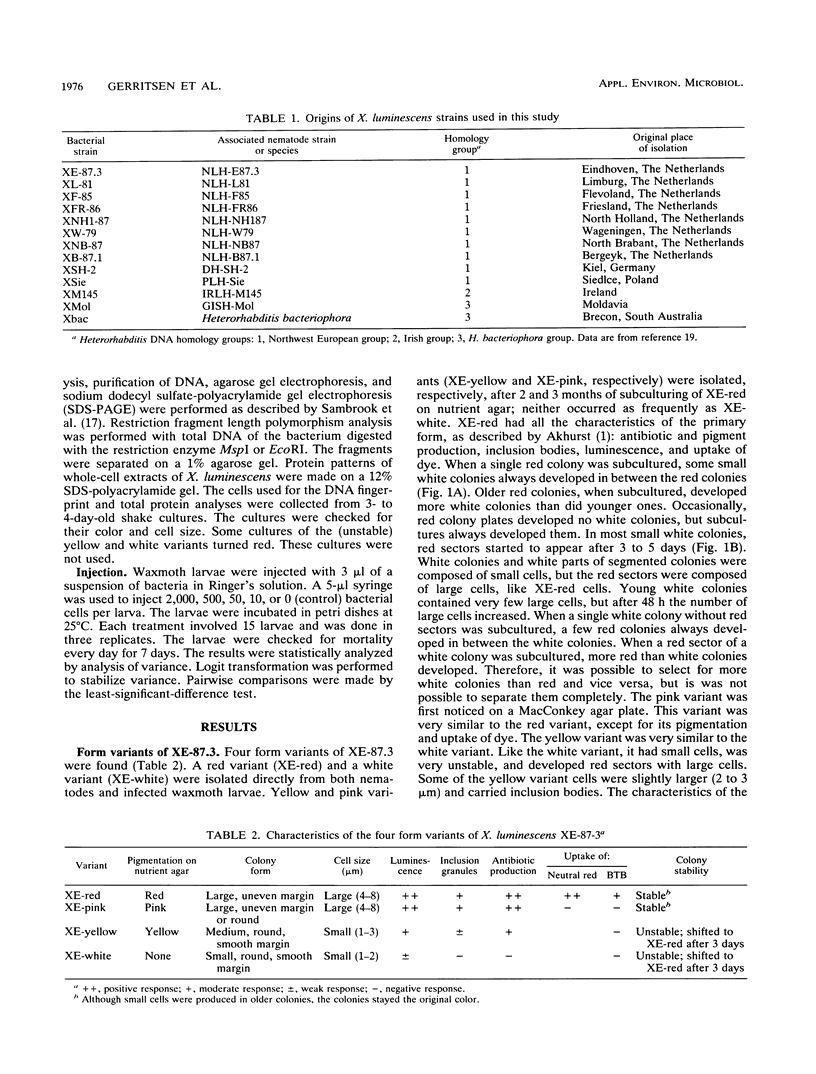
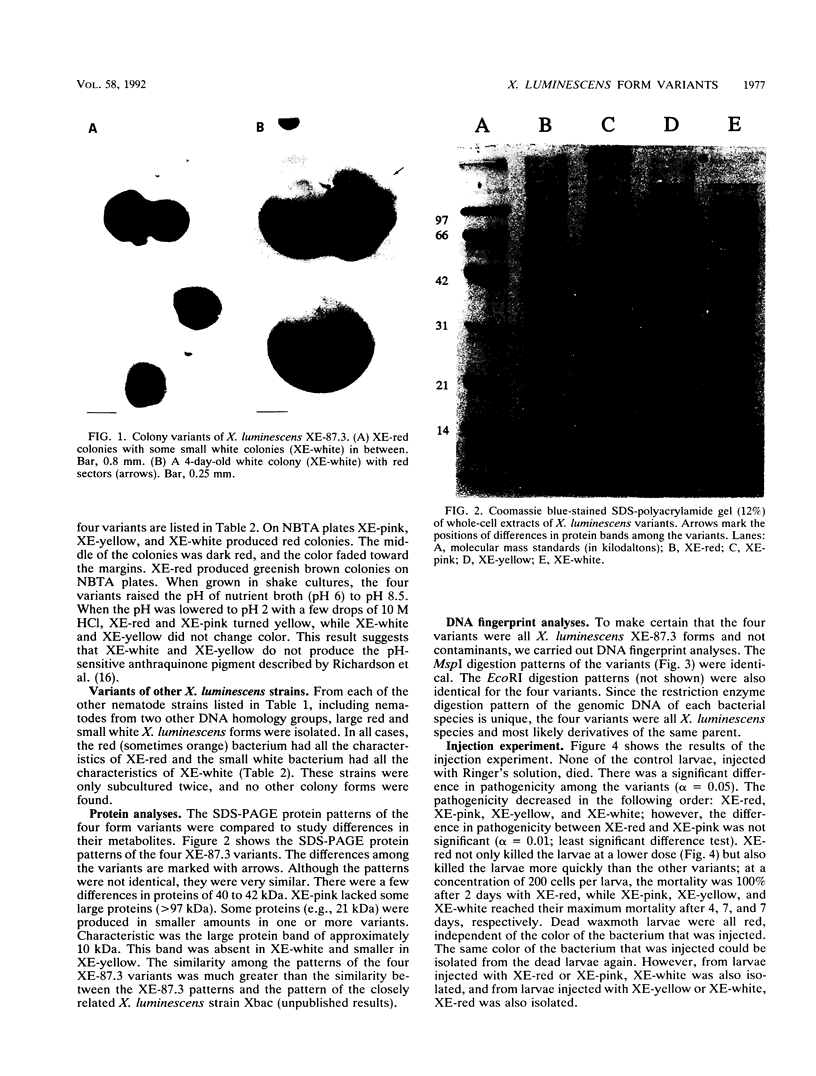
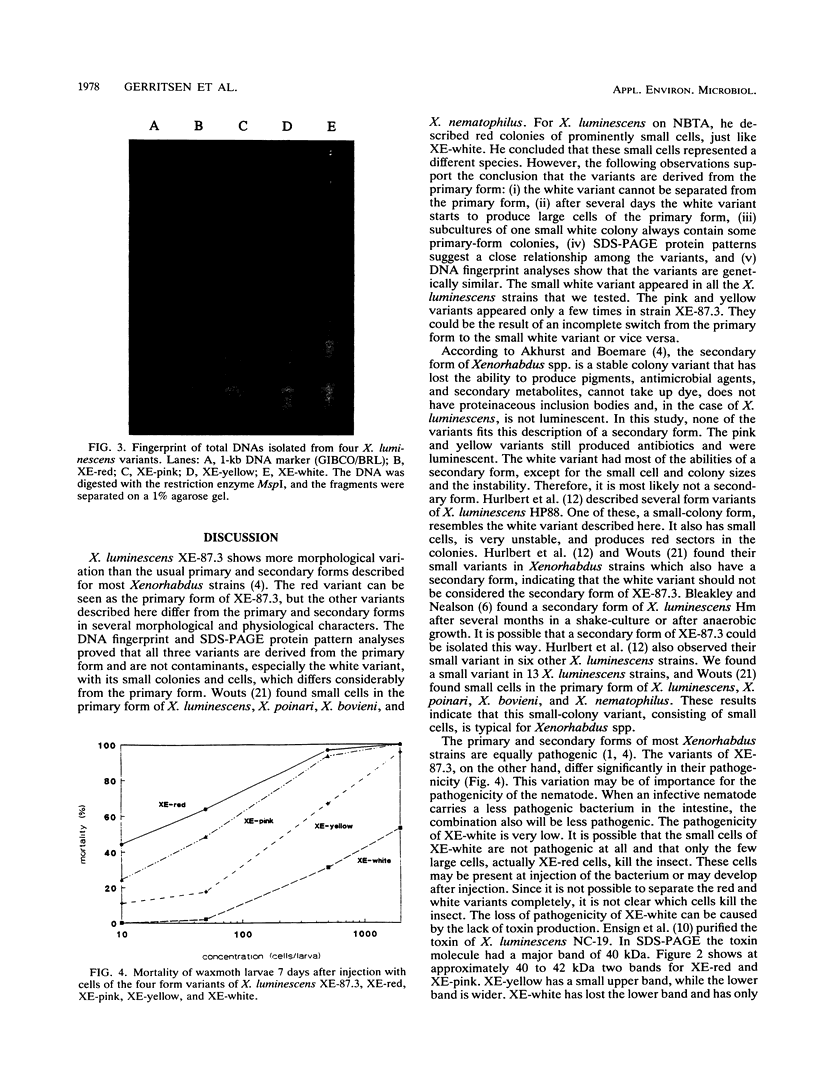
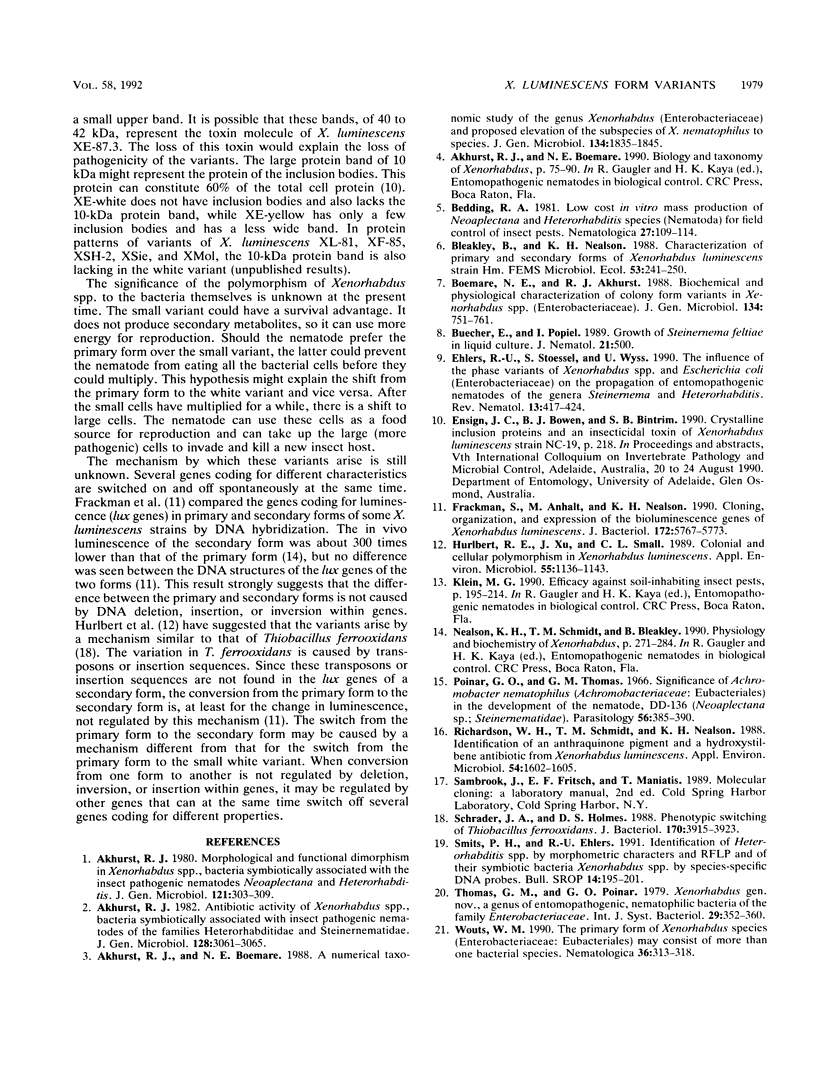
Images in this article
Selected References
These references are in PubMed. This may not be the complete list of references from this article.
- Akhurst R. J. Antibiotic activity of Xenorhabdus spp., bacteria symbiotically associated with insect pathogenic nematodes of the families Heterorhabditidae and Steinernematidae. J Gen Microbiol. 1982 Dec;128(12):3061–3065. doi: 10.1099/00221287-128-12-3061. [DOI] [PubMed] [Google Scholar]
- Akhurst R. J., Boemare N. E. A numerical taxonomic study of the genus Xenorhabdus (Enterobacteriaceae) and proposed elevation of the subspecies of X. nematophilus to species. J Gen Microbiol. 1988 Jul;134(7):1835–1845. doi: 10.1099/00221287-134-7-1835. [DOI] [PubMed] [Google Scholar]
- Frackman S., Anhalt M., Nealson K. H. Cloning, organization, and expression of the bioluminescence genes of Xenorhabdus luminescens. J Bacteriol. 1990 Oct;172(10):5767–5773. doi: 10.1128/jb.172.10.5767-5773.1990. [DOI] [PMC free article] [PubMed] [Google Scholar]
- Hurlbert R. E., Xu J., Small C. L. Colonial and Cellular Polymorphism in Xenorhabdus luminescens. Appl Environ Microbiol. 1989 May;55(5):1136–1143. doi: 10.1128/aem.55.5.1136-1143.1989. [DOI] [PMC free article] [PubMed] [Google Scholar]
- Poinar G. O., Jr, Thomas G. M. Significance of Achromobacter nematophilus Poinar and Thomas (Achromobacteraceae: Eubacteriales) in the development of the nematode, DD-136 (Neoaplectana sp. Steinernematidae). Parasitology. 1966 May;56(2):385–390. doi: 10.1017/s0031182000070980. [DOI] [PubMed] [Google Scholar]
- Richardson W. H., Schmidt T. M., Nealson K. H. Identification of an anthraquinone pigment and a hydroxystilbene antibiotic from Xenorhabdus luminescens. Appl Environ Microbiol. 1988 Jun;54(6):1602–1605. doi: 10.1128/aem.54.6.1602-1605.1988. [DOI] [PMC free article] [PubMed] [Google Scholar]
- Schrader J. A., Holmes D. S. Phenotypic switching of Thiobacillus ferrooxidans. J Bacteriol. 1988 Sep;170(9):3915–3923. doi: 10.1128/jb.170.9.3915-3923.1988. [DOI] [PMC free article] [PubMed] [Google Scholar]




